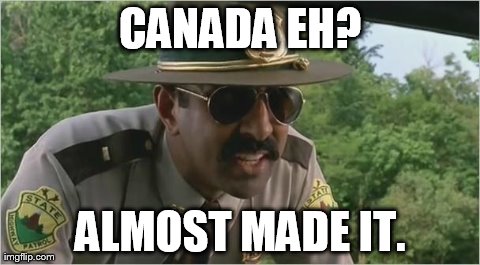I flew into Canada several times at my old job. The paperwork process is intimidating at first but once you have done it a few times it's actually pretty easy.
That's correct, you should file the eAPIS at least one hour before departing for Canada, although you may file as far in advance as you like. Register for eAPIS now, if you haven't already, as in some cases it can take a few days to be approved. Rather than call the specific airport of entry in Canada, you just call CBSA/AFSC's general hotline, 1-888-CAN-PASS, at least 2 hours but no more than 48 hours prior to your arrival in Canada. Let them know which airport you are landing at, and they will ask you your name, aircraft registration, number of people on board, etc. They will also ask where your final destination is in Canada, and at least once they asked me where I would be staying once I got there. Filling out the eAPIS form may take a while if you've never done it before, so be prepared for that.
For the flight itself, you must be on an active flight plan (either VFR or IFR), and be squawking a discrete code at the time you cross into Canadian airspace. If you go VFR, flight service may give you a squawk code when you file or open the flight plan, but if they don't just get flight following to satisfy that requirement.
Once you land in Canada, go to the customs ramp on the field. You should not exit the aircraft until customs arrives. When you get to the customs ramps, call 1-888-CANPASS again and let them know you arrived. More often than not, they will just give you a reporting number over the phone, especially if it is outside normal "banker's hours". But if they do inspect you in person, you should remain in the airplane until they arrive. Back in March, I arrived in Vancouver at 10:00pm and had to wait in the plane for about two hours as CBSA/AFSC was busy at the terminal...they ended up just calling me back and clearing me over the phone after the FBO I had made a reservation at called them to complain about how long it was taking! If they do clear you over the phone, it's best to write the confirmation number in the aircraft logbook/journey log, if you have one, or simply write it on a piece of paper and display it in the window when you are not flying. This helps prove the aircraft was cleared into Canada. I also kept a copy of the reporting number with my passport in when I was in Canada in case the authorities needed proof of my immigration status.
There are some misconceptions about the safety kit requirement in Canada, as this rule changed in the relatively recent past. I believe it used to only be required north of a certain latitude, but now it is required everywhere in Canada, as the rule reads: “no person shall operate an aircraft over land unless there is carried on board survival equipment, sufficient for the survival on the ground of each person on board, given the geographical area, the season of the year and anticipated seasonal climatic variations, that provides the means for starting a fire; providing shelter; providing or purifying water; and visually signalling distress.” (CAR 602.61). There are a few exceptions that sound like they won't apply in your case, such as that this requirement is waived for flights within 25nm of the departure aerodrome. The requirements are pretty vague, but the Canadian AIM provides some guidance on what should be in the kit. I was only inspected in person once when entering Canada, and they did not ask to see the kit, nor have I heard of the CBSA/ASFC asking to see the survival kit or searching the airplane in general. Generally they just wanted to see my passport and pilot certificates. I don't know much about the survival equipment requirements in Alaska as I've never flown there (are you going to Alaska and passing through Canada, or just staying in Canada?).
One thing you should have is proof of insurance, and Canadian regulations require it to be carried on the aircraft. Also, unless you are the owner of the aircraft, it is a good idea to have a notarized letter from the registered owner stating you are authorized to operate the aircraft in Canada.
Is this a personal trip or are you going to be working in Canada? If the latter, there is some documentation for that you may need to see. In my case, my company gave us copies of their NAFTA agreement. The CBSA/AFSC agents in Regina also required one of our pilots to obtain a Work Permit, which turned out to be a surprisingly easy process based on what he told me.
AOPA/COPA has some pretty good information on the subject, so I would recommend reading it if you haven't already:
http://www.aopa.org/go-fly/destinations/international-travel/canada
They also have a Guide to Cross-Border Operations, which I believe is only available on their website to members. It's definitely worth a read and covers some of the differences between FAA and Transport Canada regulations.


